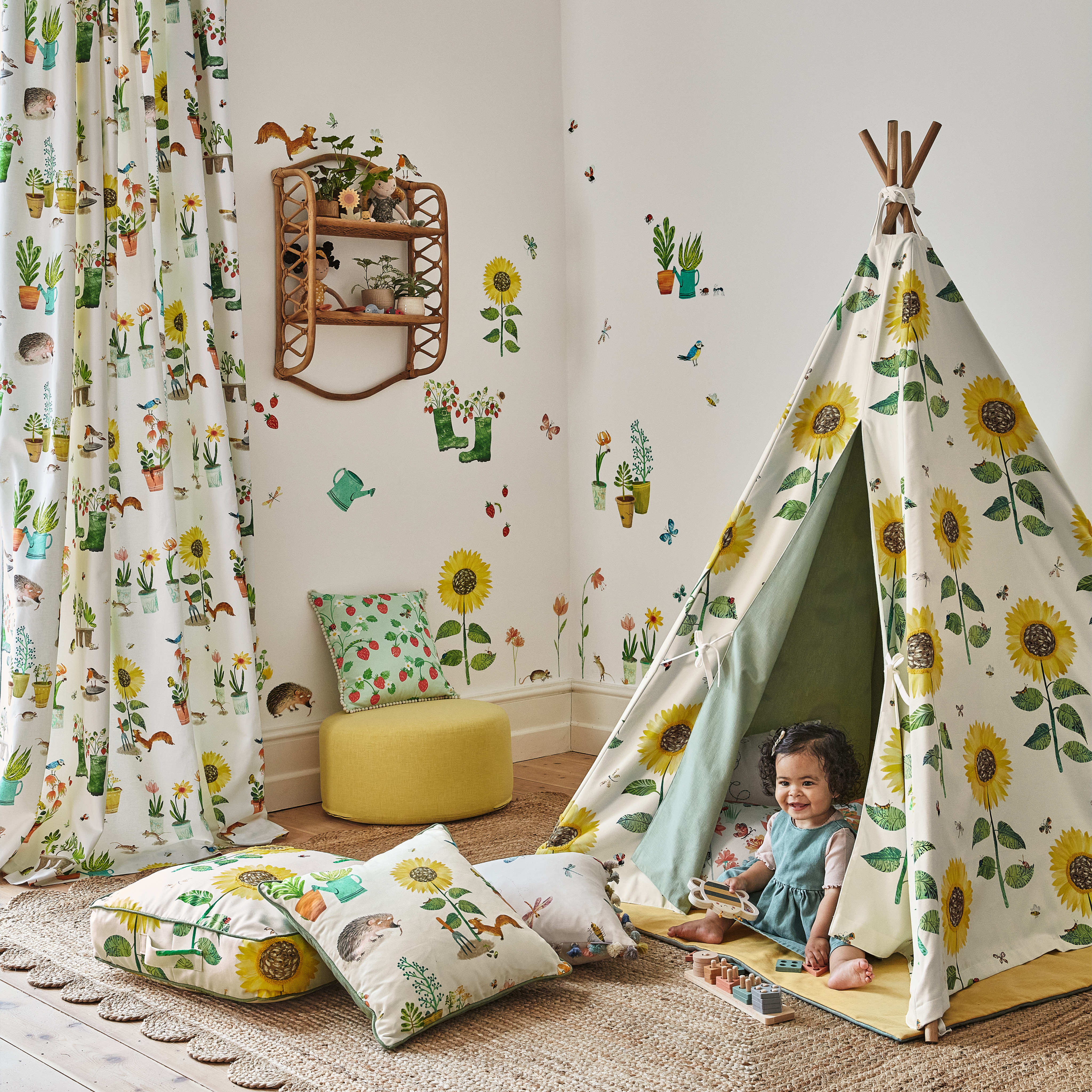Care instructions
Careful and regular care is crucial for the durability and appearance of our fabrics. Below you will find some tips on how to care for and clean our materials.
General information
The main causes of soiling are dust, cigarette smoke, soot formation from e.g. open fires and stains from spilled liquids.
- Regular vacuuming with suitable attachments makes a significant contribution to fabric care.
- The professional use of stain protection agents helps to prevent premature soiling, especially on upholstery fabrics.
- Always observe the care instructions that can be found on the care symbols in every price list and in the pattern books.
- Do not wait until the fabric is visibly soiled before washing or cleaning.
Washing
- Wash fabrics regularly and not only when they are heavily soiled.
- Do not wash items that are too large, such as long curtains or slipcovers, in domestic washing machines, as the drum size may not be sufficient, which can lead to color loss, shrinkage and creasing.
- Follow the manufacturer's care instructions regarding recommended washing temperatures, drying suitability and ironing temperatures.
- Never use bleaching detergents. Most washing powders contain bleaching agents or optical brighteners that cause colors to fade. Use mild, liquid detergents instead.
- To avoid color changes, do not leave fabrics in standing water or damp in the washing machine.
Dry cleaning
- If dry cleaning is recommended, the dry cleaner should be informed about the special requirements of the fabrics, as different materials require careful treatment.
- It is advisable not to use chemical cleaning sprays or spot cleaning agents unless they are specifically approved for the type of fabric in question.
Shrinkage
- All woven fabrics, especially natural fibers such as cotton or linen, can shrink by 6 to 8% during washing.
- Dry cleaning may also result in slight shrinkage.
- The washing temperature, mechanical movement and drying method are decisive factors for shrinkage. Observe the care labels.
- Washed items should not be dried too quickly to avoid creasing and shrinkage.
- Curtains should be sewn with sufficient space to compensate for shrinkage after the first wash or cleaning. A tolerance of at least 5% of the desired length should be taken into account.
- Curtains can change due to temperature fluctuations and humidity. Particular care should be taken with fabrics with a high viscose or linen content to ensure that they do not hang too close to windows or radiators.
Light resistance
- Modern printed or dyed upholstery fabrics are generally lightfast, but all fabrics fade over time.
- Curtains and blinds should always be hemmed and drawn back in daylight. Even in northern climates, you should not neglect protection from UV rays.
- Shutters or awnings offer additional protection.
- Transparent curtains and voiles are particularly susceptible to fading. If possible, use lined curtains.
- Silk has a lower resistance to light, therefore no complaints due to fading can be accepted. Use opaque linings for silk curtains and blinds.
Straightness of fabric
- Fabrics can appear warped, which is often caused by uneven rolling. This problem can usually be solved by loosening the fabric slightly before cutting.
- Printed fabrics should always be cut at right angles to the selvedge, not along the grain of the fabric.
Extra wide fabrics
- Extra wide fabrics are useful as they can be turned up to avoid sewing them together. Note that patterns can run both vertically and horizontally.
Silk fabrics
- Silk fabrics are more sensitive than other fabrics and require special care.
- Silk curtains should always be lined to protect them from sunlight and should not be used for Roman blinds.
- Silk should always be cleaned by professional cleaners with experience in the treatment of curtain and upholstery fabrics.
Linen
- Linen fabrics, whether made from 100% linen or mixed with other yarns such as cotton or viscose, are particularly susceptible to shrinkage, especially when washed. We therefore generally recommend dry cleaning.
- If linen is suitable for washing, it has usually undergone a shrink finish to minimize shrinkage.
Velvet fabrics
- Velvet rolls should always be stored horizontally or in their original packaging. Always roll up the velvet with the pile facing inwards.
- For curtains, the pile should be processed upwards, for cotton velvet and polyester/Trevira velvet, for viscose and shiny velvet downwards.
- It is strongly recommended to line velvet curtains to prevent fading caused by sunlight.
- With use, shading and pressure marks in the velvet should diminish over time. Regular turning of the cushions and vacuuming will prolong the beautiful appearance.
Upholstery with velvet
- Make sure that the velvet is suitable for the upholstery and use the correct technique. Hem the cut edges and fold the edge over twice before attaching the velvet.
- Do not cover foam directly with velvet, but use an intermediate layer to increase the life of the fabric.
Mezzola™
- Mezzola™ is a registered trademark of a microfiber textile from Designers Guild. It is luxurious, hard-wearing and easy to care for.
- Regular care extends the life of your Mezzola™ products.
- We recommend vacuuming the furniture two to three times a week or cleaning it with a soft brush.
- Wipe your furniture with a damp cloth every two to three weeks.
- Once a year, the covers, if removable, should be washed in the washing machine at a low temperature or taken to the dry cleaner.
- If the covers are not removable, they should be cleaned by a professional cleaning company. Make sure that the company is informed about the material.











